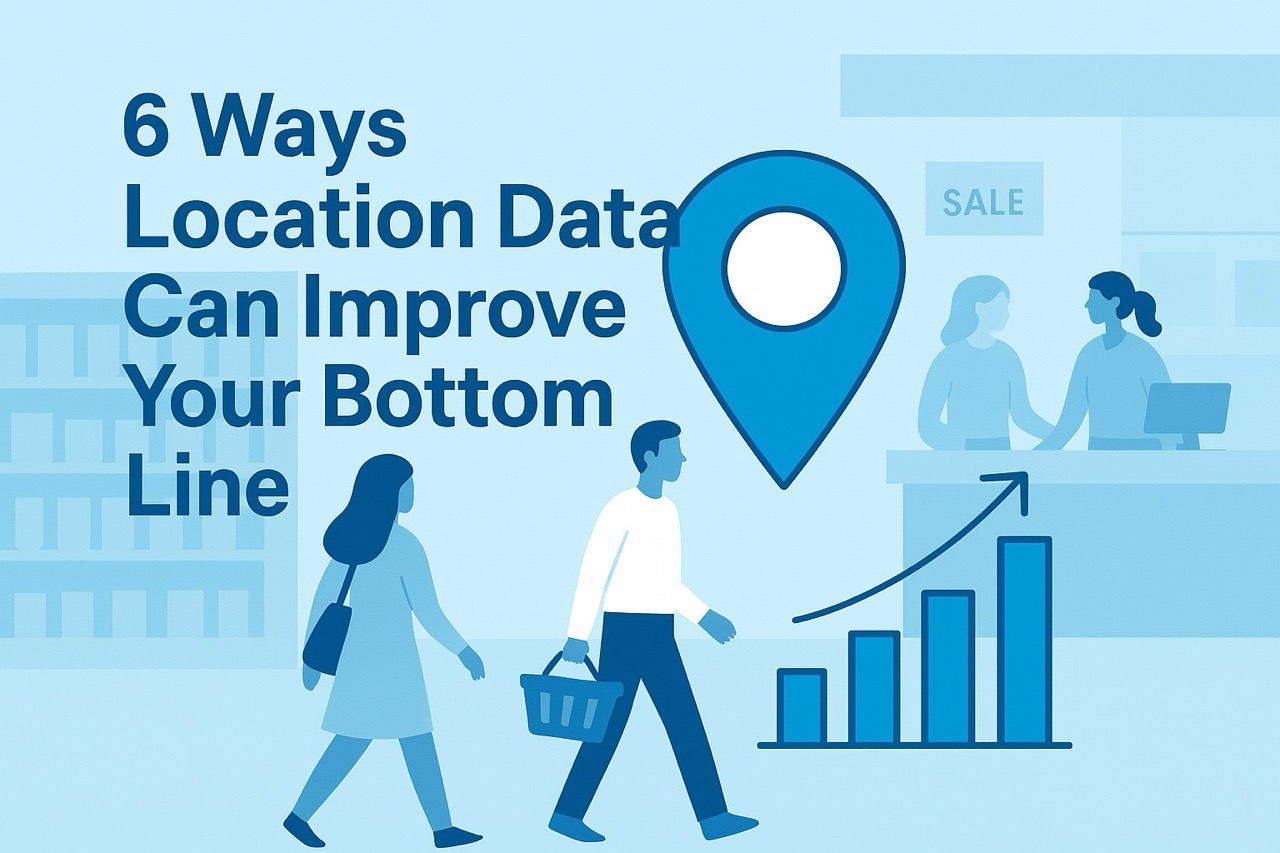
6 Ways Location Data Can Improve Your Bottom Line
6 Ways Location Data Can Improve Your Bottom Line
In today's fragmented marketplace, understanding the complete consumer journey is one of the greatest challenges—and opportunities—for brands. While technology to capture and track digital footprints has greatly improved over the past decade, a significant portion of consumer behavior still happens offline in the physical world.
Precision-based location data provides a critical link between online and offline behaviors by transforming anonymous foot traffic into actionable audience intelligence that directly impacts your bottom line.
According to a report by Grand View Research, the global location intelligence market is projected to reach over $53.6 billion by 2030, growing at a compound annual rate of 16.8%. Leveraging high-quality mobility data is no longer just a marketing tactic; it's a fundamental driver of business growth.
By understanding where consumers go, how they behave in the real world, and what those behaviors signal about their interests and intent, you can make smarter, more profitable decisions.
Here are six ways location intelligence can drive meaningful business results.
1. Optimize Ad Spend with Pinpoint Targeting
Stop wasting ad spend on overly broad demographic segments.
Location data allows you to target consumers based on their real-world behaviors and validated visitation patterns. By focusing your campaigns on individuals who frequent you or competitor locations, affinities towards certain brands or categories, or entertainment venues, you ensure your message reaches a high-intent audience, maximizing your return on ad spend (ROAS).
2. Enhance Customer Segmentation
Go beyond who your customers are to understand what they do.
Location intelligence allows you to segment audiences based on lifestyle habits and brand affinities revealed by their real-world journeys. Differentiating between a "Quick-Serve Coffee Drinker" and a "Boutique Cafe Loyalist" is just the beginning.
These segments become powerful assets for deeper business intelligence, allowing you to conduct actionable research, perform cross-visitation analysis to find new partnership opportunities, and create far more resonant messaging, all while ensuring your media plan is efficiently focused on the highest-value consumers.
3. Measure Out-of-Home (OOH) Advertising Effectiveness
For decades, measuring the true ROI of OOH advertising has been a significant challenge.
Location intelligence becomes most powerful when it's used to capture direct feedback from exposed consumers. By first analyzing foot traffic patterns to identify audiences likely exposed to a billboard or digital screen, you can then engage those specific users with high-quality survey opportunities.
This methodology moves past simple visitation metrics to help you understand the "why" behind a consumer's action, allowing you to directly measure brand lift, message recall, purchase intent, and validate whether the OOH campaign drove a specific action.
This ability to capture direct feedback finally connects your OOH campaigns to tangible consumer sentiment, proving their value in a way that passive measurement alone cannot.
4. Gain a Competitive Edge with Conquesting Insights
Understanding your own customers is only half the battle.
Location intelligence allows you to analyze the visitation patterns of your direct competitors’ customers. Identify their most loyal buyer persona, understand their visit frequency, and determine where else they shop. This insight is crucial for developing "conquesting" designed to win market share.
5. Inform Site Selection and Real Estate Strategy
Making real estate decisions without robust foot traffic data is a costly gamble.
Historical mobility data provides a clear picture of a location's viability by analyzing long-term visitation trends, identifying peak traffic hours, and profiling the types of consumers who frequent the area. This data-driven approach de-risks expansion and helps you make smarter site selection and understand the true trade area.
6. Understand the Complete Customer Journey
The modern consumer journey is not linear; it fluidly moves between digital and physical touchpoints.
Location data provides the crucial context that bridges this gap. By analyzing the real-world visitation patterns of the audiences who engage with your website or social channels, you can build a truly holistic customer profile.
This allows you to understand what your digital audience does offline—where else they shop, what brands they're loyal to, and what their lifestyle truly is—completing a picture that digital analytics alone cannot provide.
From Data to Dollars
Location data is no longer a niche tool for analytics teams; it is a fundamental component of modern business intelligence. By leveraging precision-based, actionable location intelligence, you can reduce waste, increase efficiency, and uncover revenue opportunities that were previously invisible.
The People Platform provides the sophisticated audience and location intelligence required to achieve these results.
Ready to unlock smarter decisions with high-quality location data? Contact The People Platform today.







